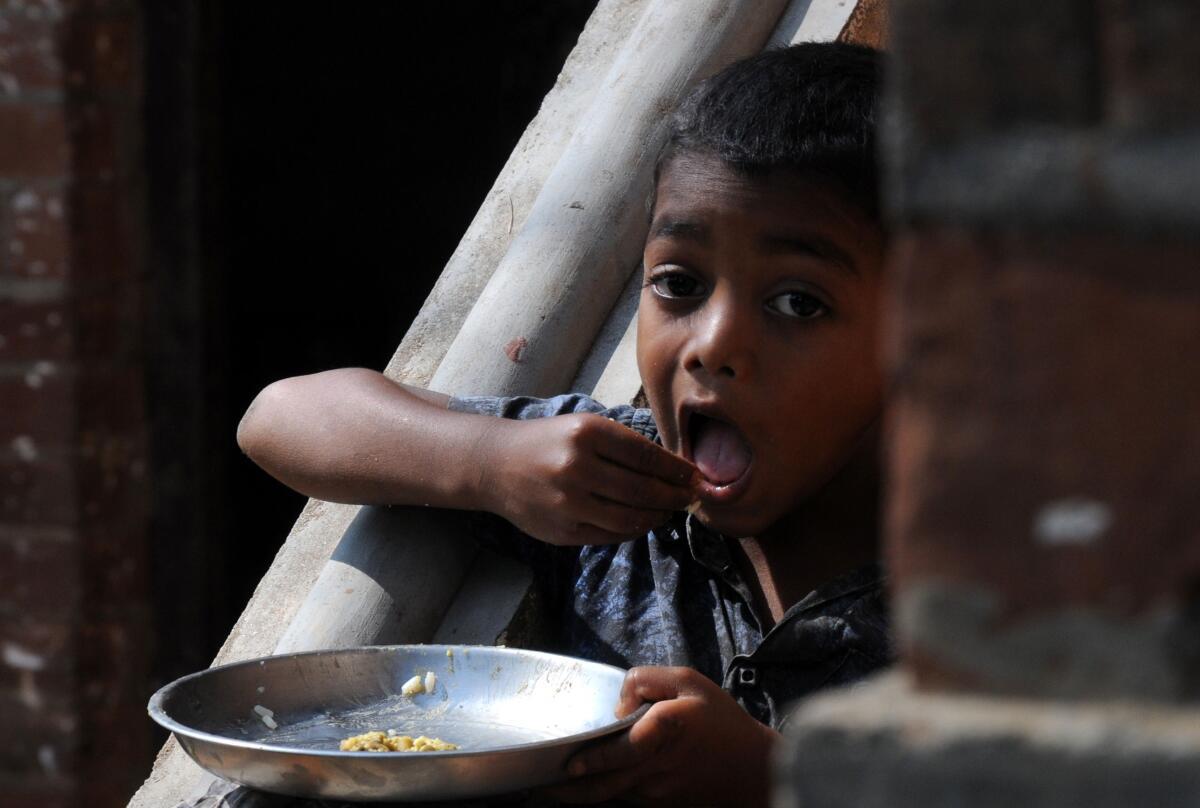India’s population of 224.3 million undernourished people has decreased over the past 15 years according to the UN report. However, the number of obese adults and anaemic women has increased in the world’s second-most populous nation. According to the State of Food Security and Nutrition in the World 2022 report, which was released by the World Health Organization (WHO), International Fund for Agricultural Development (IFAD), UNICEF, World Food Programme (WFP), and Food and Agriculture Organization (FAO), 828 million people worldwide were suffering from hunger in 2021, up about 46 million from 2020 and 150 million since the COVID-19 pandemic’s outbreak.
Buy Prime Test Series for all Banking, SSC, Insurance & other exams
KEY POINTS:
- There were 224.3 million undernourished persons in India in 2019–21, down from 247.8 million in 2004–06.
- The number of stunted children under the age of five decreased from 52.3 million in 2012 to 36.1 million in 2020 and the number of overweight children under the age of five decreased from three million to 2.2 million in 2020.
- However, India, which has a population of over 1.38 billion, saw an increase in the number of obese adults from 25.2 million in 2012 to 34.3 million in 2016, and an increase in the number of women with anaemia between the ages of 15 and 49 from 171.5 million in 2012 to 187.3 million in 2019.
- From 11.2 million in 2012 to 14 million in 2020, exclusively breastfed infants up to the age of five months.
Important highlights about India as per the Report:
- In India, the prevalence of stunting in children under the age of five decreased from 41.7 percent in 2012 to 30.9 percent in 2020, and the prevalence of overweight children under the age of five decreased from 2.4 percent in 2012 to 1.9 percent in 2020. In percentage terms, the prevalence of undernourishment in the country’s entire population stood at 21.6 percent in 2004-06 and fell to 16.3 percent in 2019-21.
- The percentage of obese adults in India climbed from 3.1 to 3.9 percent in 2016, whereas the percentage of anaemic women aged 15 to 49 decreased somewhat from 53.2 to 53 percent in that same year.
- According to the report, 973.3 million Indians, or roughly 70.5 percent of the population, were unable to afford a nutritious meal in 2020, up from 948.6 million in 2019. (69.4 percent ).
- In India, there were 966.6 million people who could not afford to eat a nutritious diet in 2018, down from almost a billion in 2017.
- The Targeted Public Distribution System for grains in India and the Food Assistance Programme based on Electronic Vouchers for Rice in Indonesia both offer significant subsidies to ultimate consumers.
- Farmers have consistently experienced pricing disincentives (negative NRPs).
- In order to make up for the price disincentives caused by trade and market measures and to increase production and self-sufficiency in the nation, input subsidies and expenditure on general services, such as infrastructure and R&D, have been frequently utilised.
The proportion of individuals who experience hunger increased in 2020 and continued to rise in 2021, reaching 9.8 percent of the global population after having remained largely steady since 2015, according to the research. In comparison, the numbers for 2019 and 2020 are 8% and 9.3%, respectively.
Factors responsible as per the Report:
- Ukraine and Russia produced nearly a third of the world’s wheat, barley, and half of its sunflower oil. Russia and its ally Belarus are the Nos. 2 and 3 producers of potash, a vital component of fertiliser, respectively.
- There were 2.3 billion people who had moderate to severe problems getting enough food in 2021. This was before the Ukraine war, which has led to increases in the price of grain, fertiliser, and energy.
- A whopping 924 million people, or 11.7% of the world’s population, experienced acute food insecurity, an increase of 207 million in just two years.
- In 2021, the gender gap in food insecurity widened, with 31.9% of women worldwide experiencing moderate to severe food insecurity compared to 27.6% of males, a difference of more than 4 percentage points from the previous year.
- In 2020, 3.1 billion individuals, an increase of 112 million from 2019, were unable to afford a nutritious diet due to rising consumer food prices brought on by the COVID-19 pandemic and the containment measures that were implemented.
- Worst form of malnutrition, wasting, which ups a child’s risk of death by up to 12 times, affects an estimated 45 million children under the age of five.
- A chronic shortage of vital nutrients in their diets also resulted in stunted growth and development among 149 million children under the age of five, and 39 million of them were overweight.
- Conflict, extreme weather, and economic shocks, which are the three main causes of food insecurity and malnutrition, are constantly highlighted in this report.




 Haryana Assembly Passes Resolution to Co...
Haryana Assembly Passes Resolution to Co...
 Which Country is Known as the Land of Ch...
Which Country is Known as the Land of Ch...
 Operation Hawkeye: US and Jordan Strike ...
Operation Hawkeye: US and Jordan Strike ...







